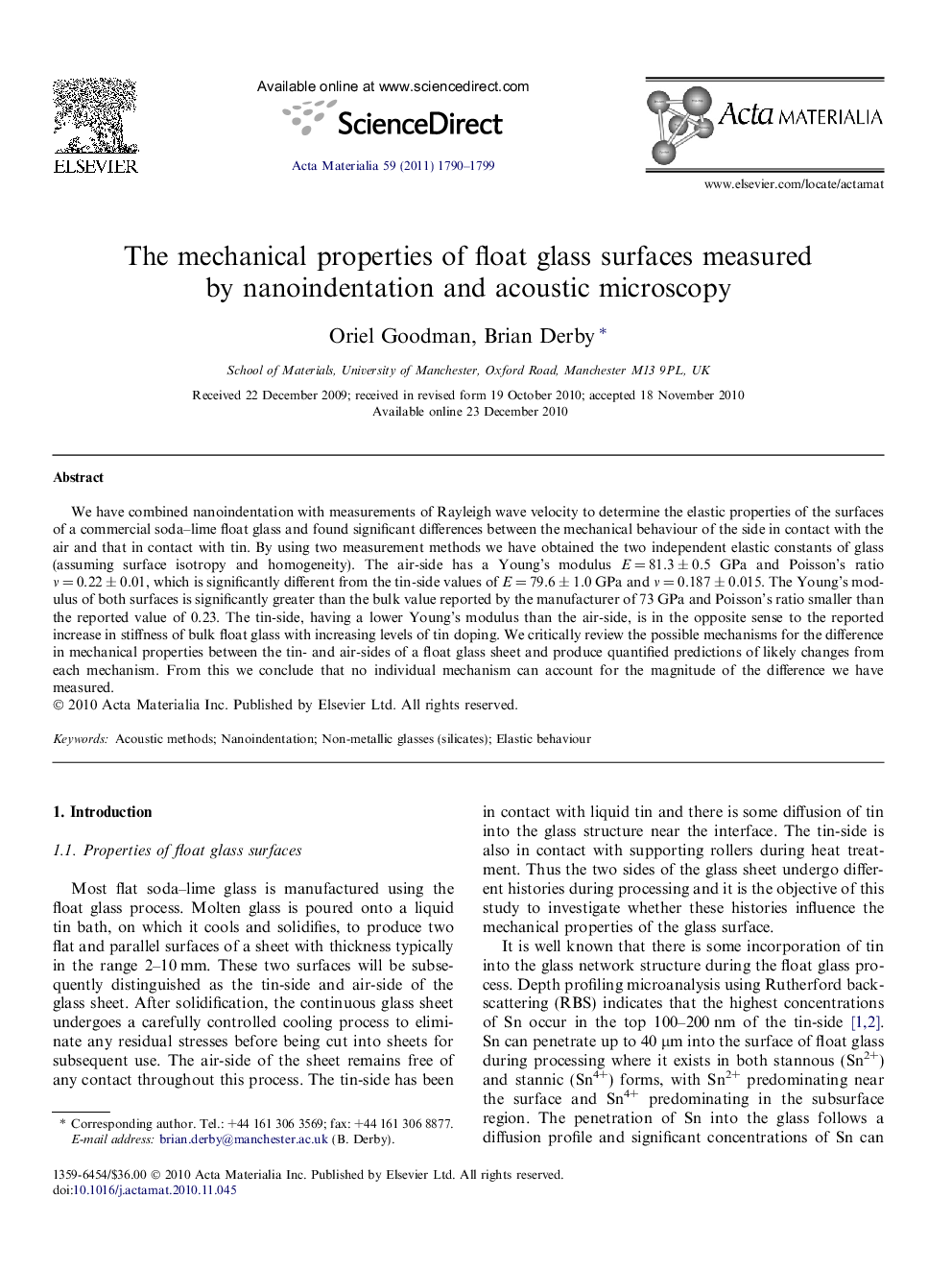| Article ID | Journal | Published Year | Pages | File Type |
|---|---|---|---|---|
| 10620632 | Acta Materialia | 2011 | 10 Pages |
Abstract
We have combined nanoindentation with measurements of Rayleigh wave velocity to determine the elastic properties of the surfaces of a commercial soda-lime float glass and found significant differences between the mechanical behaviour of the side in contact with the air and that in contact with tin. By using two measurement methods we have obtained the two independent elastic constants of glass (assuming surface isotropy and homogeneity). The air-side has a Young's modulus E = 81.3 ± 0.5 GPa and Poisson's ratio ν = 0.22 ± 0.01, which is significantly different from the tin-side values of E = 79.6 ± 1.0 GPa and ν = 0.187 ± 0.015. The Young's modulus of both surfaces is significantly greater than the bulk value reported by the manufacturer of 73 GPa and Poisson's ratio smaller than the reported value of 0.23. The tin-side, having a lower Young's modulus than the air-side, is in the opposite sense to the reported increase in stiffness of bulk float glass with increasing levels of tin doping. We critically review the possible mechanisms for the difference in mechanical properties between the tin- and air-sides of a float glass sheet and produce quantified predictions of likely changes from each mechanism. From this we conclude that no individual mechanism can account for the magnitude of the difference we have measured.
Related Topics
Physical Sciences and Engineering
Materials Science
Ceramics and Composites
Authors
Oriel Goodman, Brian Derby,
